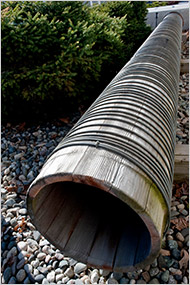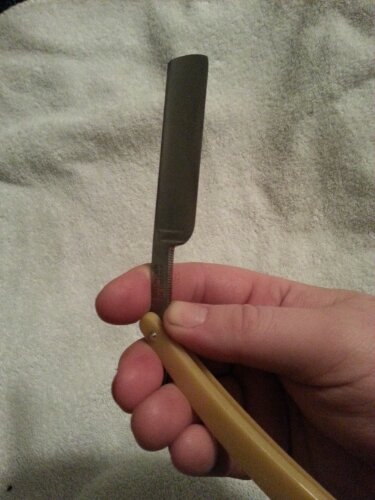What do you think is the most likely reason for a water grid shutdown? It isn’t terrorism and it isn’t pollution. The answer is, the age of the infrastructure used to deliver the water or collect the sewage. Think about the city you live in. Chances are it has existed for hundreds of years, if not longer. Most cities water systems grow in phases. They keep adding to the network every year as the population grows. The end result is most cities have infrastructure that range from less than a year to hundreds of years and with many different materials. I have seen water mains made of wood in service as late as 2011. Like any piece of equipment it all has a useful lifespan, beyond that lifespan failures become increasingly more likely to be catastrophic. The result is a large volume and dollar amount of material and equipment that needs repairs or to be replaced.

Wooden Water Main circa 1909 source http://www.nytimes.com
Normally the stress on water systems comes from population growth. A water main that was ok in the 1980’s may not be large enough for today’s population. As cities infill and build higher density buildings they frequently overburden the water systems. Either causing contamination or total failure of the system.
Older equipment is also more susceptible to natural disasters, terrorism and human accidents. These three things can break a new system too, however they don`t have to try as hard with the older systems.
Climate change is having an affect too. As severe weather events are on the rise, storm sewers might be found lacking, as was the case in Calgary, Alberta and Toronto, Ontario recently. The system was grossly undersized for the amount of rain that fell. They said things like “it was a month’s worth of rain in one day” on the news. When the fact is, it once was a months worth of rain, and is now something more frequent, lets say a weeks worth of rain. I’m not suggesting we build our systems to meet a 1000 year storm, but I am suggesting that our current idea of a 100 year storm may be an underestimation and that the error is getting worse. To bring it back to infrastructure, if we are built to the current 100 year storm levels, what happens if the 100 year storms are getting worse? We will find out in the not too distant future.

Flooding In Calgary AB 2013 source: http://www.newinfills.ca
What are the options for people to take? The first and most important thing to do is to plan ahead and replace older parts of the system before they fail. A $50,000 job to replace an old section of pipe at a time you choose is a lot cheaper than waiting for it to fail at the time you are least prepared. If you are connected to a public utility, ask them about their equipment replacement plan. If they are not looking 25 years into the future or longer then ask them why not? If you have private systems, you need to ask the same questions. Can you afford to replace the septic system when it fails? Or can you afford to dig/drill a new well when the casing cracks?
As you can probably surmise the addition of more people + more rain + more water and more sewage means system failures will become more frequent and probably for longer periods of time. What does this mean to the average person? Plan for system failure. Have a backup system ready to go when it does. Know the age of your equipment and it`s expected lifetime. That way you wont be caught off guard.






